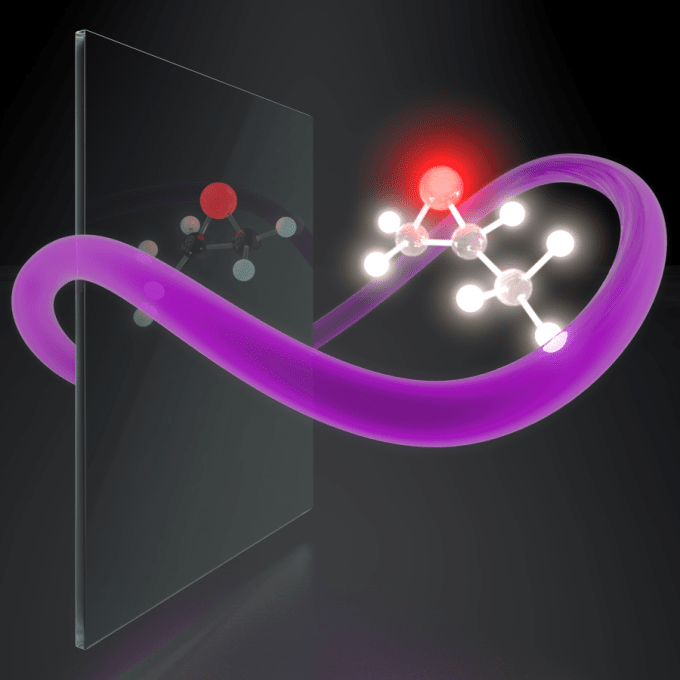Oct 29 2019
Light is the quickest means to differentiate between left- and right-handed chiral molecules, which finds significant applications in the field of biology and chemistry. But normal light can only weakly sense the handedness of molecules.
 Synthetic chiral light selectively interacts with one of the two versions of a chiral molecule (left or right). The selected version responds by emitting very bright light, while its “mirror twin” remains dark. (Image credit: Steven Roberts)
Synthetic chiral light selectively interacts with one of the two versions of a chiral molecule (left or right). The selected version responds by emitting very bright light, while its “mirror twin” remains dark. (Image credit: Steven Roberts)
Currently, scientists from the Max Born Institute for Nonlinear Optics and Short Pulse Spectroscopy (MBI), the Israel Institute of Technology (Technion), and Technische Universität (TU) Berlin have found how to produce and characterize a completely new type of light, synthetic chiral light, which helps to detect the handedness of the molecules in a remarkably clear manner.
The findings of their combined efforts have just been published in Nature Photonics.
Similar to the left and right hands, some molecules in nature also possess mirror twins. Although such twin molecules may appear similar, they differ by certain properties. For example, the molecular handedness (or chirality) plays an important role in biology, chemistry, and drug development: one type of a molecule could be a remedy for a disease, but its mirror twin (or enantiomer) may be toxic or even deadly.
It is very difficult to differentiate between opposite chiral molecules because they appear identical and behave identically, until they react with another chiral object. For a long time, light has been the ideal candidate: oscillations of the electromagnetic field form a chiral helix in space, along the direction of propagation of light. Based on the clockwise or counterclockwise spinning of the helix, the light wave is right- or left-handed.
The interaction of chiral molecules with it is different. But the helix pitch set by the light wavelength is nearly a thousand times greater than the size of a molecule. Therefore, the small molecules sense the light helix instead as a huge circle, not sensing its chirality at all.
To address this issue, researchers from MBI, Technion, and TU Berlin proposed a new method of preparing a completely new kind of chiral light, which can form a chiral structure in time at every single point in space.
The handedness of this new light can be tuned in such a way that one enantiomer will actively interact with it and emit bright light in response, while the opposite enantiomer will not interact with it at all.
Dr David Ayuso, Study First Author and Researcher, MBI
The researchers explained this new chiral light mathematically and analyzed their model by simulating its interactions with chiral molecules. They also demonstrated how to “cook” such light in a laboratory: combining two converging laser beams carrying light waves of two different frequencies.
They adjusted the phase shift between the different frequencies to control the handedness of this synthetic chiral light, thus choosing with which molecule type it can strongly interact.
Synthetic chiral light is described by completely new intrinsic symmetry properties for electromagnetic fields, which is very exciting.
Ofer Neufeld, PhD student, Physics Department, Israel Institute of Technology
Neufeld, who is the second author of the study, has contributed equally to the research.
It is anticipated by the scientists that the new method can find many potential applications in biology and chemistry. For instance, synthetic chiral light can help to monitor chiral chemical reactions in real time, or to find the change in the handedness of molecules.
We also hope to utilize this new approach to spatially separate molecules with the opposite handedness using ultrafast lasers.
Dr Olga Smirnova, Professor, TU Berlin
Dr Smirnova is the head of an MBI theory group.